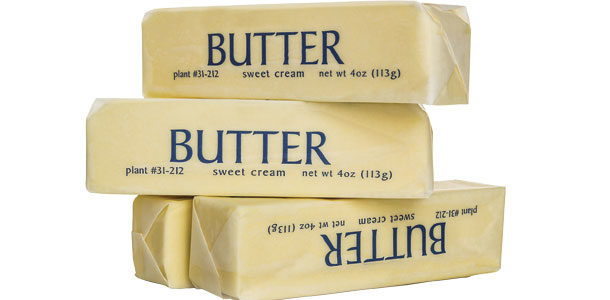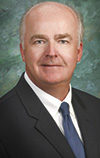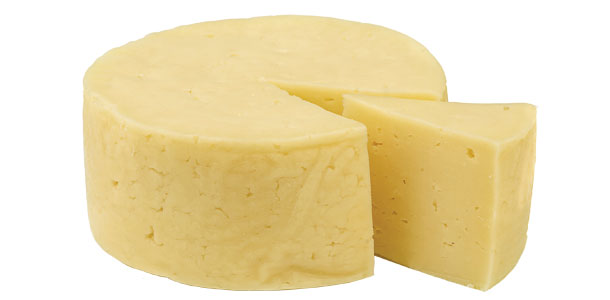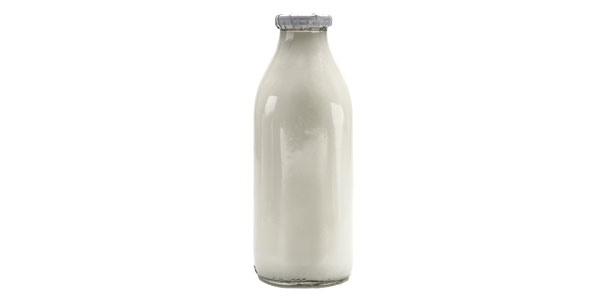Butter, cheese, nonfat dry (NDM) and skim powder (SMP) utilize about 65 percent of the nation’s milk production. In some states, especially the nation’s largest milk-producing states, the percent of milk used by these products is even greater.
U.S. dairy farmers are fortunate that increased demand for these products, both domestically and globally, continues to increase. Due to these products using a significant portion of the nation’s milk production, it is important to keep a close watch on their commercial use.
How was use in 2014? What trends do we see in use of these products? How does domestic use compare to what is exported? Which countries are major buyers of U.S. dairy products? This article addresses these and similar questions.
The USDA’s Economic Research Service (ERS) reports each month the domestic and export commercial disappearance of butter, cheese, NDM and SMP. (Disappearance of NDM and SMP is combined.)
The ERS defines commercial disappearance as civilian and military purchases of dairy products for domestic and foreign use. It does not include any dairy products kept for farm or household use, or government donations. Note: I substitute the word “use” in place of disappearance.
Butter
As depicted in Figure 1, total commercial use of butter was down about 3 percent in 2014 compared to 2013. This is not the best news, but let’s look at the numbers closer. Domestic use in 2014 was almost identical to the previous year, 1.73 billion pounds compared to 1.74 billion pounds.
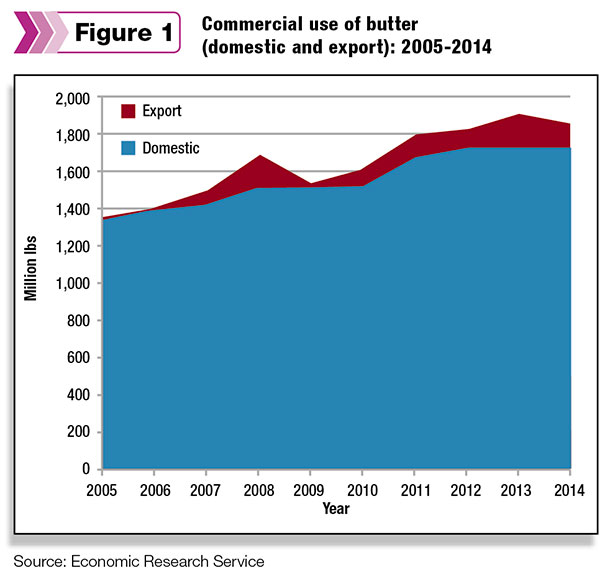
Considering the 2014 CME average butter price was more than 38 percent higher than a year earlier, butter sales were encouraging last year. The 2014 decline was almost entirely due to lower exports, which were down almost 30 percent. The relative high domestic butter price was a major factor in lower butter exports.
The trend over the past 10 years is the best news on the butter front. Since 2005, domestic butter use increased almost 30 percent. During the same 10-year period, butter exports went from about 1 percent of total use to 7 percent. Combining both domestic and exports, greater than 500 million more pounds of butter were sold in 2014 compared to 2005.
Cheese
Moving to cheese, the largest user of U.S. milk production, commercial use continues to increase (see Figure 2.) Total cheese use in 2014 was about 3 percent greater than 2013. However, to better see what is happening, we need to break those numbers down.
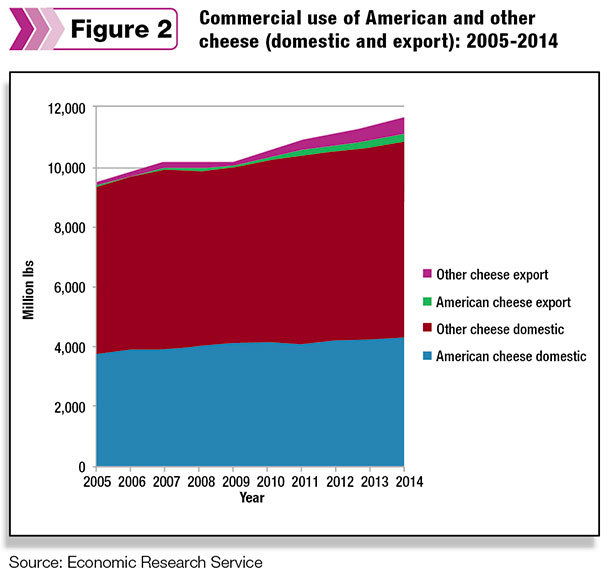
Comparing 2014 to 2013, domestic use of American cheese was up about 1 percent, other cheese up 2 percent, and total exports up 17 percent. Cheese exports were about 7 percent of total cheese use in 2014. Ten years earlier, in 2005, exports represented only 1 percent of total cheese use.
Looking at the cheese use for the past 10 years, the following three trends stand out:
1.Domestic commercial use of American cheese is slowing to about 1 percent per year.
2.Domestic commercial use of other cheese is about 2 percent per year, double the rate of American cheese. Domestic use of other cheese in 2014 was one-and-a-half times greater than American cheese. It appears other cheese use will continue to outpace American cheese.
3.Cheese exports are becoming more significant each year. At the current growth rate, exports could represent 10 percent or more of total use or more by the end of the decade. Further, more than 70 percent of cheese exports are in the other cheese category, cheese of which U.S. plants may be one of few manufacturers.
Nonfat dry and skim milk powder
Total use of NDM and SMP is up 37 percent since 2005. But as seen in Figure 3, all of the growth is due to exports. Prior to 2004, U.S. exports of NDM and SMP were limited (see Figure 4). Then, in 2004, powder exports took off and remained strong. For the past two years, NDM and SMP exports were more than half of total commercial use.
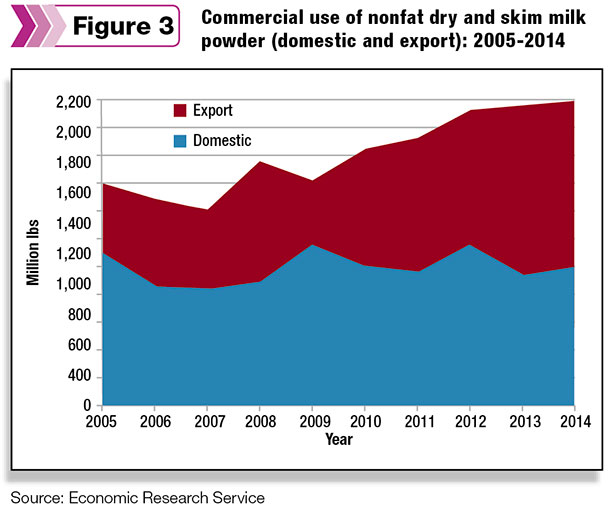
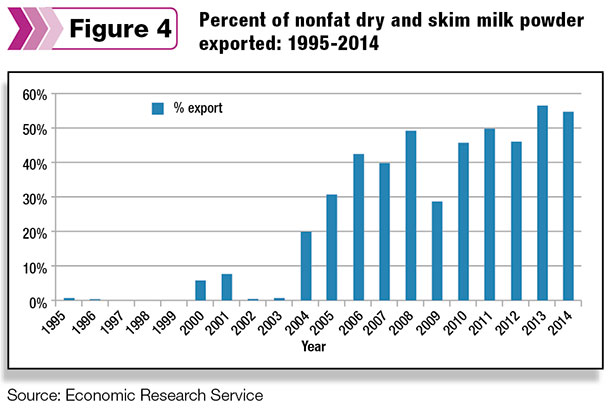
U.S. powder manufacturers have responded to the export market by increasing production of SMP. SMP is more recognized in the international market than NDM. Standards for SMP come from the international, Codex Alimentairus, which requires SMP to have a minimum protein content of 34 percent.
Milk products such as lactose or milk protein concentrate may be added to SMP to meet the protein level. NDM is regulated by the Code of Federal Regulations. NDM has no required protein level. U.S. production of SMP increased from 322.7 million pounds in 2005 to 535.1 million pounds in 2014.
What about domestic powder use? During the past 10 years, domestic annual use averaged a little less than 1 billion pounds with ups and downs as seen in Figure 3. The price of NDM is a large factor in domestic use. For example, at the current NDM price, it is profitable for cheese plants to use NDM to fortify their cheese vats. However, a year ago, when NDM was double today’s price, it was not profitable to do so.
Export countries
With dairy exports’ growing importance, readers may find it interesting to know the countries receiving U.S. exports of butter, cheese and powder (see Table 1). The list provides two interesting observations.
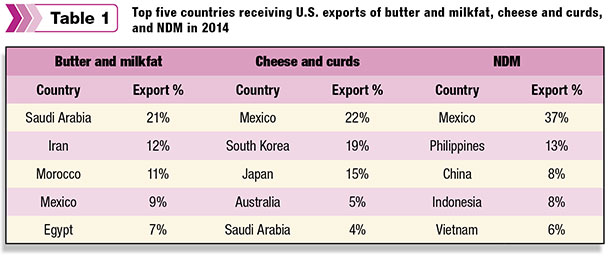
First is our neighbor to the south, Mexico, who is a major buyer of U.S. dairy products. Close proximity should help the U.S. be Mexico’s most competitive dairy supplier. Second is the importance of the Middle East and Northern Africa as a U.S. dairy buyer, especially of butter and milkfat.
In summary, the good news is: Commercial use of butter, cheese and powder (NDM and SMP) continue to grow. An examination of the numbers shows, for butter and cheese, domestic use continues to advance but at slower rate compared to years past.
However, butter and cheese exports are consuming a larger share of total use. When it comes to NDM and SMP, almost all of the increase in use is due to exports. The bottom line: Exports are a major factor in commercial use of manufactured dairy products. PD
Calvin Covington is a retired dairy cooperative CEO and now does some farming, consulting, writing and public speaking.

Calvin Covington
Retired Dairy Cooperative CEO
